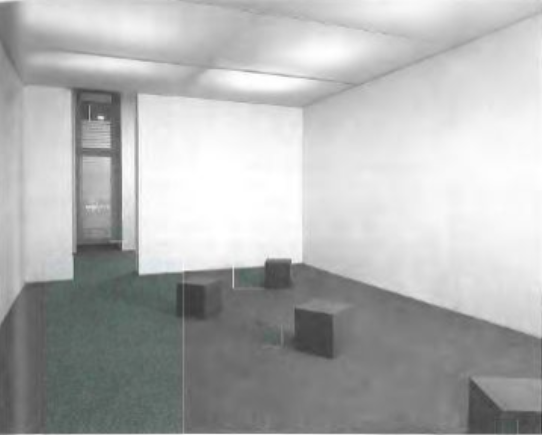On Kawara: Reading One Million Years (Past and Future) at David Zwirner Gallery
In his latest exhibition, On Kawara presented what was ostensibly a pair of empty rooms. Minimally designed. they included muted gray carpets and false ceilings similar to those found in corporate offices. The only objects in these rooms were a set of four dark gray foam cubes intended as seats, but used only hesitantly by gallery visitors, who must have assumed they were sculpture. From a sitting position, however, it was easier to absorb the sensory qualities of Kawara's exhibition. Its minimal visuality is meant to underscore a sense of temporal isolation, and to acknowledge as palpable the voices that sound from speakers above the false ceiling. Alternating between a male and a female, one set of voices counts downward from an obscurely large variable (...995,081 BC....995,080 BC....995,079 BC...) and the other counts upward (...3,087 AD....3,088 AD....3,089 AD....). Both counts move forward, one toward the Year Zero, and the other toward future millennia.
Other sensory qualities become obvious as one sits in these empty rooms. One notices a distinct difference in the overall tone of each room, ranging from the glwo of lights to the timbre of the voices reporting numerical sequences. The lights in one room seem warmer, an effect that is more obvious when one spends time there and then moves to the other room. One voice is warmer, more welcoming in its breath and phrasing; the other is colder, more distant, even cruel. This attention to slight sensory detail reminds me of the manner by which Kawara controls perception in his paintings, which are utterly mechanistic in their presentation but involve slight differences in color and hue, and which are also subject to time limits; works that are not finished in a single day are summarily destroyed. The finality involved in both types of work, the paintings and the spoken numerical statements, serve to underscore the complicity between conceptual experience and cognitive recognition of sensory elements.
What becomes apparent in this recent work are certain difficulties in the perception of time. Normally we measure time either by degrees or events. Kawara's approach can be seen either as cold calculation or as an extended reverie on the creation of chronologocal time and how it functions as a measure of human existence. Kawara's interests are millennial, and the immensity of time waits before him.

Comments